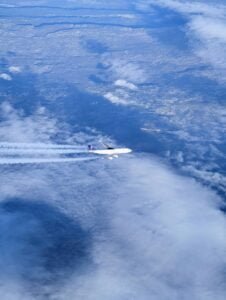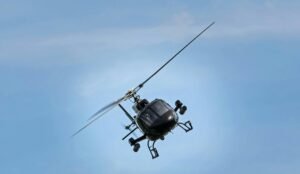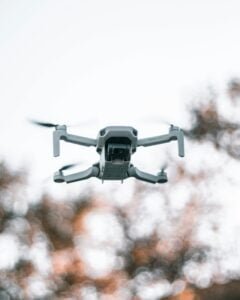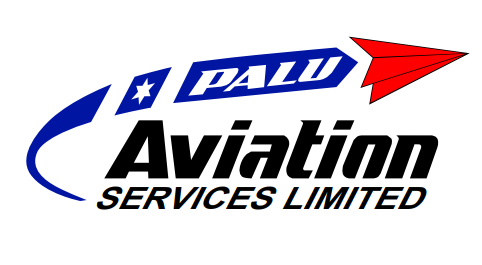Introduction to Aircraft Classification
The classification of aircraft is a fundamental aspect of both the aviation and aerospace industries, providing a structured framework for understanding the diverse range of flying machines. At its core, aircraft classification is based on various criteria including design, purpose, and propulsion system. This systematic approach aids in categorizing the myriad types of aircraft, each serving distinct roles and functionalities.
Aircraft can be divided into several major categories. Fixed-wing aircraft, commonly known as airplanes, are the most familiar type to the general public. These aircraft are characterized by their stationary wings and reliance on forward thrust generated by engines, which can be either jet engines or propellers. Examples of fixed-wing aircraft range from small single-engine planes used for personal travel to large commercial airliners capable of transporting hundreds of passengers across continents.
Rotary-wing aircraft, or helicopters, distinguish themselves with their rotating blades that enable vertical takeoff and landing, as well as hovering capabilities. This unique design allows helicopters to operate in environments and perform tasks that are unsuitable for fixed-wing aircraft, such as search and rescue missions, medical evacuations, and urban firefighting.
Lighter-than-air aircraft, such as balloons and airships, achieve flight through buoyancy. By utilizing gases like helium or hot air, these aircraft can float in the atmosphere, offering a different approach to aviation. They are often used for leisure activities, aerial photography, and advertising.
Unmanned Aerial Vehicles (UAVs), commonly referred to as drones, represent a rapidly growing segment of the aviation industry. These aircraft can be operated remotely or autonomously, making them invaluable for military surveillance, agricultural monitoring, and even delivery services. The versatility and technological advancement of UAVs continue to expand their applications across various fields.
By recognizing the different types of aircraft and their respective capabilities, one can better appreciate the complexity and innovation inherent in the field of aviation.
Fixed-Wing Aircraft: Types and Examples

Fixed-wing aircrafts are defined by their rigid wings that generate lift due to the aircraft’s forward motion. These types of aircraft are widely recognized for their efficiency in long-distance travel and their ability to carry substantial payloads. The School of Aviation often emphasizes the versatility and importance of fixed-wing aircraft in both commercial and military sectors, as they serve a multitude of purposes ranging from passenger transport to cargo delivery and reconnaissance missions.
One of the most common types of fixed-wing aircraft is the single-engine plane, such as the Cessna 172. This type of aircraft is frequently used for pilot training due to its relatively simple design and ease of handling. Single-engine planes are typically used for personal travel, flight training, and light cargo transport.
Jetliners, on the other hand, are designed for commercial aviation, carrying passengers and cargo over long distances. Examples of jetliners include the Boeing 747 and the Airbus A380. The Boeing 747, often referred to as the “Queen of the Skies,” has been a staple in long-haul international travel for decades, known for its large passenger capacity and range. The Airbus A380, the world’s largest passenger airliner, further pushes the boundaries of commercial aviation with its double-deck design and ability to accommodate over 500 passengers.
In addition to passenger aircraft, fixed-wing aircraft also encompass specialized models like cargo planes. The Boeing 747 Freighter and the Airbus A330-200F are prime examples of aircraft designed specifically for transporting goods. These cargo planes are equipped with features such as wide fuselages and reinforced floors to handle heavy and bulky items, playing a crucial role in global logistics.
In military applications, fixed-wing aircrafts like the Lockheed C-130 Hercules and the Northrop Grumman B-2 Spirit serve essential functions. The C-130 Hercules is renowned for its versatility and ability to perform various missions, including troop transport, and medical evacuation. The B-2 Spirit, a stealth bomber, capable of deliveringneuclear and conventional munitions.
Overall, fixed-wing aircrafts are integral to modern aviation, with diverse models tailored to specific needs and applications, reflecting the continuous advancements in engineering and technology within the field.
Rotary-Wing Aircraft: Types and Examples

Rotary-wing aircraft, characterized by their rotating blades, offer distinct operational advantages over fixed-wing aircraft. These aircraft, including helicopters and gyroplanes, excel in vertical takeoff and landing (VTOL) capabilities, making them indispensable in various scenarios where space is constrained or runways are unavailable. This unique attribute allows rotary-wing aircraft to hover, take off, and land vertically, providing unparalleled flexibility.
Helicopters are the most common type of rotary-wing aircraft. They come in various configurations tailored to specific missions. Light utility helicopters, such as the Bell 206, are versatile and widely used for tasks ranging from aerial photography to medical evacuations. Attack helicopters, exemplified by the Apache AH-64, are engineered for combat, equipped with advanced weaponry and armor to engage ground targets effectively. Transport helicopters, like the Sikorsky UH-60 Black Hawk, play a crucial role in military and humanitarian missions, capable of ferrying troops, supplies, and equipment over long distances.
Gyroplanes, another type of rotary-wing aircraft, operate on a different principle compared to helicopters. They use an unpowered rotor in free autorotation to generate lift, with an engine providing thrust via a conventional propeller. While less common, gyroplanes offer advantages in terms of simplicity and cost-effectiveness for certain applications, such as recreational flying and agricultural work.
Rotary-wing aircraft also have limitations. Helicopters, for example, typically have lower speed and range compared to fixed-wing aircraft. Their maintenance and operational costs can be higher due to the complexity of their rotor systems. Additionally, they are more susceptible to adverse weather conditions, which can limit their operational window.
In summary, rotary-wing aircraft like helicopters and gyroplanes are essential in modern aviation, offering unique capabilities that complement fixed-wing counterparts. From the versatile Bell 206 to the formidable Apache AH-64 and the reliable Sikorsky UH-60 Black Hawk, these aircraft have proven their worth across various domains, demonstrating the importance of understanding the different types of aircraft and their specific applications.
Specialized Aircraft: Lighter-than-Air and UAVs

Specialized aircraft encompass a diverse range of designs and functionalities, notably including lighter-than-air aircraft and unmanned aerial vehicles (UAVs). Lighter-than-air aircraft, such as balloons and airships, operate on the principle of buoyancy. These aircraft are filled with gases like helium or hot air, which are less dense than the surrounding atmosphere, allowing them to ascend and remain aloft. Historically, lighter-than-air crafts have played significant roles, from early exploration and military reconnaissance to modern-day advertising and meteorological studies.
Notable examples of lighter-than-air aircraft include the Goodyear Blimp and weather balloons. The Goodyear Blimp, often seen hovering over major sporting events, serves as an iconic example of airship technology. It utilizes helium for lift and has been employed for aerial advertising and broadcasting. Weather balloons, on the other hand, are crucial for collecting atmospheric data. They ascend to high altitudes, carrying instruments that measure temperature, humidity, and pressure, providing valuable information for weather forecasting and research.
Unmanned aerial vehicles, commonly referred to as drones, have seen rapid advancements and widespread adoption in recent years. UAVs range from small, recreational drones like the DJI Phantom series to advanced military systems like the MQ-9 Reaper. The DJI Phantom series exemplifies the recreational and commercial use of UAVs, popular among hobbyists and professionals for aerial photography and videography. These drones are equipped with high-resolution cameras and GPS systems, allowing for precise navigation and stunning aerial shots.
In the military domain, UAVs like the MQ-9 Reaper play a crucial role in surveillance and reconnaissance missions. The MQ-9 Reaper, equipped with advanced sensors and payloads, provides real-time intelligence and situational awareness, enhancing military operations’ efficiency and effectiveness. The versatility of UAVs extends to various civilian applications, including agriculture, infrastructure inspection, and emergency response, underscoring their growing importance in modern society.
Learn more about the different types of aircrafts here.
Are you passionate about aircraft and eager to explore the world of aviation? At Palu School of Aviation, we offer an unparalleled education in aircraft technology and engineering. Don’t miss the opportunity to turn your aviation dreams into reality. Enroll at Palu School of Aviation today and take the first step toward a thrilling career in aviation.
Apply Now and Soar to New Heights!
